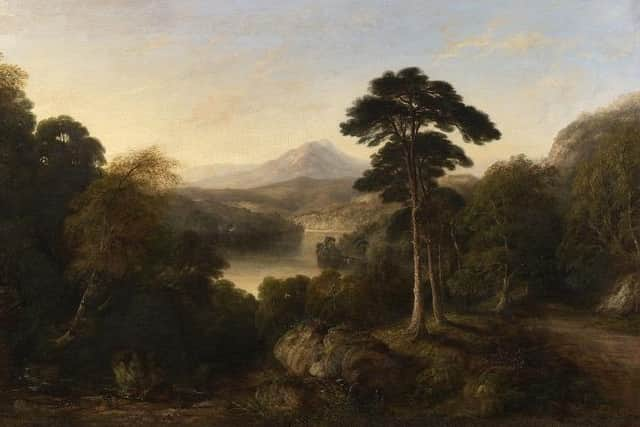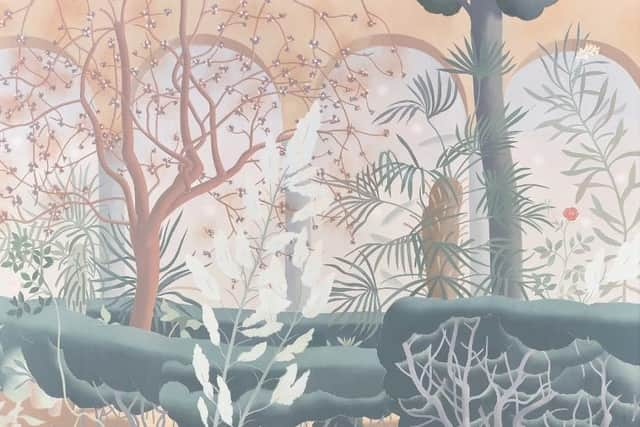Art reviews: True to Nature – Trees in Scottish Art | Scratching the Surface Parts 1 & 2


True to Nature – Trees in Scottish Art, Fine Art Society, Edinburgh ****
Scratching the Surface Parts 1 & 2, Scottish Gallery, Edinburgh ****
Advertisement
Hide AdTrue to Nature is the title of an exhibition of Scottish paintings at the Fine Art Society. There is a subtitle too, Trees in Scottish Art, but maybe we can dispense with that. Surely the great majority of landscapes will have trees in them somewhere. To be true to nature, however, was once a reasonable summary of most painters’ ambitions and that would certainly include the artists in the current National Gallery exhibition, A Taste for Impressionism. Indeed it was principally the ambition to be true to nature that drove the remarkable development of French painting that the show presents. This varied show of Scottish painting at the Fine Art Society makes a nice counterpoint, however, for the French had no monopoly on the idea of seeking truth to nature. Indeed, I hope that the displays in the new wing of the National Gallery will make just this kind of counterpoint and not just be a ghetto for Scottish art. It can hang proudly with the best.


The Fine Art Society show ranges from Alexander Nasmyth in the early 19th century to John Byrne and Barbara Balmer in the present day. Nasmyth was a mentor and friend to David Wilkie who called him “the father of Scottish landscape” which, while not strictly accurate, nevertheless does give an idea of his place in Scottish art. An apprentice to Allan Ramsay in the 1770s and a close friend of Robert Burns, he lived on until 1840. Much inspired by the elegiac mood in the paintings of Claude, but translating it to the hills and lochs Scotland, his art might sometimes seem formulaic, but there are several pictures here that defy that simplistic judgment. Loch Ness with a View of Dochfour House, for instance, is a lovely rendering of a classic Scottish view. It also shows the eastern end of the Loch before Thomas Telford changed its configuration by building the Caledonian Canal. A talented engineer himself, Nasmyth would have been fascinated by what Telford was doing and indeed the two men had worked together on the design of a bridge on at least one occasion.
If he was father of Scottish landscape painting, Nasmyth was also the father of a family of landscape painters. These included several of his daughters, but here only two of his sons are represented. Patrick Nasmyth, who became very successful in the south, is represented here by a lovely small painting of Tintern Abbey which looks as though it was done on the spot. Alexander’s son James is best known as inventor of the steam hammer, but the family was multi-talented. A painting of Loch Katrine shows that James’s gifts were not limited to heavy engineering, but the picture was painted in 1888. He was an old man and his picture does look extraordinarily old-fashioned. More than 60 years earlier, Alexander Nasmyth’s contemporary, the Rev. John Thomson of Duddingston, the painting minister and a favourite artist of Walter Scott, had already introduced something new and more modern into the idea of truth to nature – the truth to feeling and the drama of expression. The free handling in his big painting of Innerwick Castle dating from around 1826 is part of what gives it real grandeur.
Then truth to nature changed gear again. The Pre-Raphaelites brought sunlight into painting and this is clearly visible in Alexander Fraser’s Ben Venue, but Constable also became a model for Scottish artists, although not for artists in the south. A painting of a river bank by Sam Bough and a painting of a mill by John Crawford Brown both show this very clearly, but the artist who developed Constable’s vision most significantly anywhere and who took it in a radical new direction was William McTaggart. His son-in-law James Caw tells us how much he was inspired by Constable’s legacy and it is easy to see it in his work. Two pictures by McTaggart are among recent acquisitions here. One is a charming early painting of a cottage with children at an outdoor meal. The other, of Glenramskill, is from 1908. He died in 1910. Almost abstract in its freedom, it points forward far into the 20th century. Indeed, beside his work a lovely painting by William Gillies of winter at Caverhill looks quite gentle and domestic. So too do two charming paintings by Barbara Balmer.
Alongside these paintings by McTaggart is a lovely, sympathetic portrait of him by his friend Henry Kerr. It has been in the family until now and really should go to the Scottish National Portrait Gallery. They have McTaggart’s self-portrait, but I never felt such contact with him as I did with this painting by a close friend. It is a quite different way of seeing one of Scotland’s greatest artists. If our National Galleries say they can’t afford it, then maybe some generous benefactor could offer to buy it for them?


Barbara Balmer’s lyrical paintings are flat and patterned and so are very much about surface and Scratching the Surface is the title of a two-part show at the Scottish Gallery. The first part includes painters Joe Fan, Derrick Guild and Naoko Shibuya, and sculptor Bill Scott, but also the striking and often satirical, pictorial ceramics of Stephen Bird. The second part includes the recycled glass sculptures of Gregory Alliss, the marvellous work in precious metals of Malcom Appleby, the slipware pots of Douglas Fitch and Hannah McAndrew, the exquisite bronzes of Kojo Hatakeyama, the ceramic sculptures, if that is the right way to describe their decorative work of Vicky Lindo and Bill Brookes, and the glassware of James Maskrey.
Advertisement
Hide AdThe idea of the title, Scratching the Surface, is that art is ultimately about surfaces, but when we scratch them, as though going through the looking glass, we can find our way into another world. We certainly do in Joe Fan’s sometimes comic paintings of people, flowers and very often, too, of food. Echoing the theme of the Fine Art Society show, Derrick Guild takes us back to truth to nature in painting, but in a double bluff, his nature is not nature at all, but art history. He riffs on eloquently naturalistic details of paintings by Raeburn, or on Karel Fabritius’s goldfinch, or, in Bird Feeder, on both at once, a Raeburn boy with a goldfinch on his arm. Naoko Shibuya’s world is one of close focus flowers and birds, while Bill Scott’s sculpture in wood and bronze is not so much about the surface, but the complex mystery of interior mindscapes.
In Part 2, in Malcolm Appleby’s work in silver, surface is critical. A lovely Blizzard Bowl, for instance, has a surface that is so complex that it does indeed suggest driving snow. But perhaps the star in this second part is Hannah McAndrew’s slipware. She gives real authenticity to her revival of this ancient style of pottery decoration. Slipware, being clay of one colour on a body of clay of another, is a harmony of golds and light and dark browns, but it is also very much about tactile surfaces. The decoration stands slightly proud of the clay of the vessel’s body. You have to touch slipware really to appreciate it.
True to Nature until 12 November; Scratching the Surface, Parts 1 & 2 until 29 October